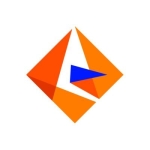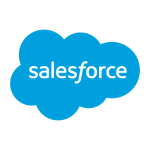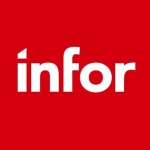What is our primary use case?
I have been a solution architect since 2005. I have a lot of experience with SAP Process Orchestration. I have a lot of experience with many kinds of integration between all kinds of processes. SAP Process Orchestration is the tool we chose to use to help us effectively design and improve workflows.
What is most valuable?
The components that we use a lot and find very valuable are the integration map, the routing and we also use planning products for SAP in order to map each process there. My colleagues and I have extensive experience in process development, solutions, and architecture.
All the integration, all the data maps, all the routing functions are good. These things are well managed by SAP. The ST-PI (Solution Tools Plug-In) that is part of the integration of the cloud services is also well-designed.
What needs improvement?
In my opinion, the part that SAP needs to improve in Process Orchestration is the monitor and governance. The monitoring governance offered by SAP is too technical. Only the consultants that have technical skills or development skills are able to manage this product. What is missing, in my opinion, is a better business monitoring component.
Our company creates business monitoring in UI5 and Fiori applications that help the customer to have a better view of what good monitoring is. With the technical monitoring of SAP, someone in the organization has to have technical skills rather than business skills. So using these solutions in combination, we are able to give the client another more business-oriented kind of monitor and governance which is not so technical.
For how long have I used the solution?
I am a solutions architect, a consultant, and partner of a tech services company that does integrations since 2010. Our core business is process orchestration, process integration, development for SAP HANA, and mobile application development. I have some experience with some BPM (Business Process Management) and I have a lot of experience with PI/PO (Process Integration and Orchestration).
What do I think about the stability of the solution?
I would say SAP PO is stable because it offers the possibility to implement an architectural cluster with some nodes for the security layer and also for the stability. SAP PI/PO uses on-premises information. So if you have to connect an application on the LAN or potentially the same network, it is good. But if you needed to integrate an external service, you probably need to use the SAP PI product because the service is not an on-premise application.
What do I think about the scalability of the solution?
The scalability of SAP PI can be adaptive as a solution for targeted software integration.
How are customer service and technical support?
Since early on, I never needed a lot of support from SAP because their solution is stable. Probably the first time we used this product it was unstable, so we contacted them and they needed to issue a patch in order to fix some issues. But the latest releases of SAP are stable, so we do not need to use the SAP support often. When we do, it is good. If the customer pays to have the support, they are always available.
Which solution did I use previously and why did I switch?
I previously worked with Dell Boomi. Dell Boomi is a part of the process for cloud server integration. We had previous experience with TIBCO. But mostly, our experience is based on SAP products.
The main differences or advantages of SAP over other vendors has grown. SAP is now one of the leaders in integration. But of course, if the customers need an integration broker or need a solution for integration, SAP is probably the first choice for the customer. Because if you have another product like Oracle or Microsoft, or third parties that are not SAP products — or the customer chooses a different solution like Boomi — all the integration of these applications may be more challenging.
SAP Process Orchestration can be used even if you do not have other parts of the SAP digital suite. But I recommend the PO or PI if the customer has another handler like SAP S/4HANA, or HDCC. Otherwise, I suggest other diagnostic products.
How was the initial setup?
The initial setup for the product is straightforward and easy. At this point, we deal mostly only with the application part. So when we have to integrate components on the back end, the basic part is not so difficult. That is about one or two days of work per layer. The initial part of the installation may take some time, but it is easy. You need to set up the communication between the third-party application systems and you have to hook that to the ethernet in order to get to the point where you start with development integration.
What other advice do I have?
On a scale from one to ten where one is the worst and ten is the best, I would rate this product as an eight-out-of-ten.
Additional features that I would like to see in the next release to improve the rating would be to improve the governance of the monitor component and adopt SAP PI/PO with the new connectors that have the capabilities to work better with applications. All they are offering with the solution currently is the ability to integrate application to application or business to business.
Disclosure: My company has a business relationship with this vendor other than being a customer. partner












Thank you for sharing your view and experience on Process Orchestration.